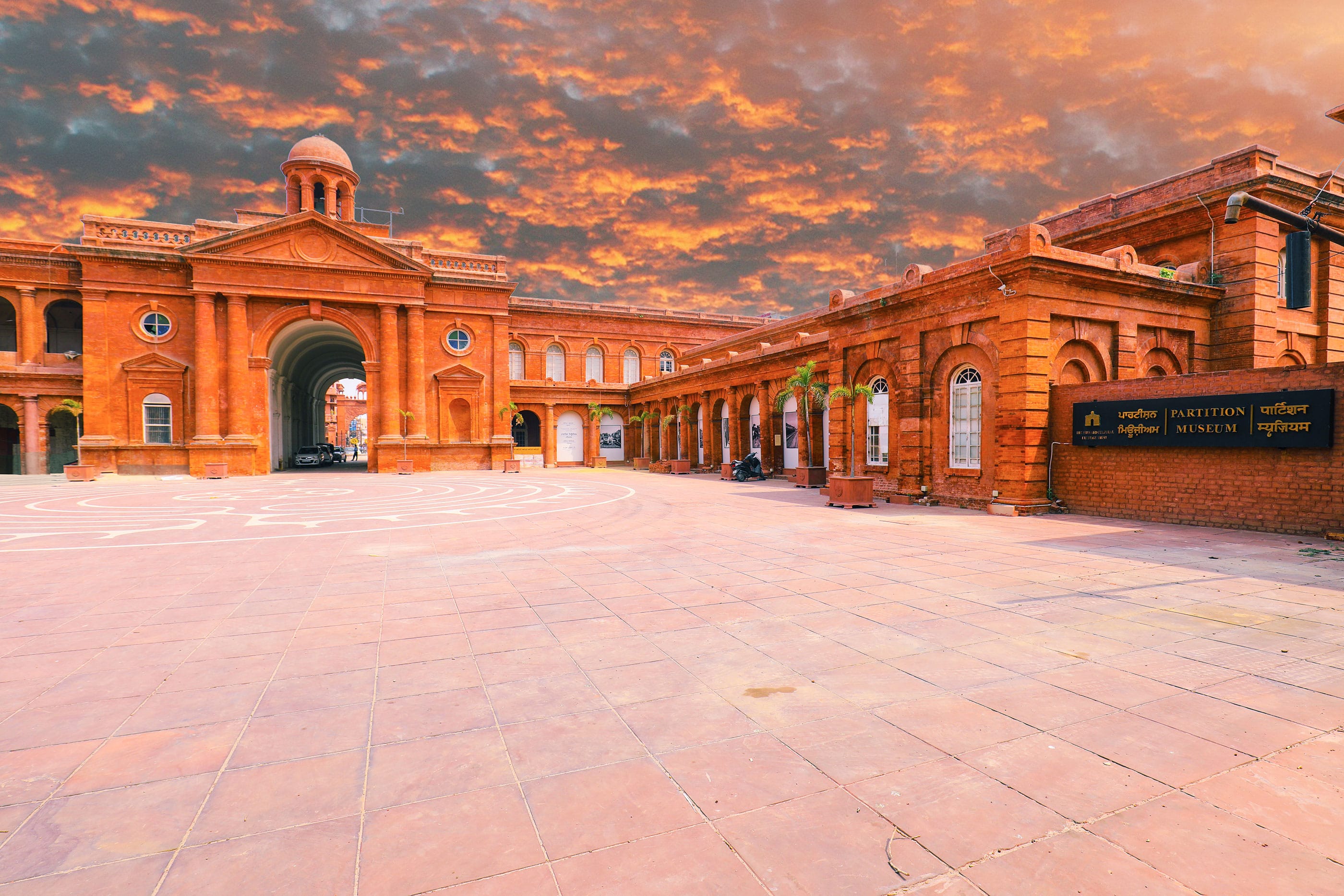

The Golden Temple (Sri Harimandir Sahib Amritsar) is not only a central religious place of the Sikhs, but also a symbol of human brotherhood and equality. Everybody, irrespective of cast, creed or race can seek spiritual solace and religious fulfilment without any hindrance. It also represents the distinct identity, glory and heritage of the Sikhs. To pen-down the philosophy, ideology, the inner and outer beauty, as well as the historical legacy of Sri Harimandir Sahib is a momentous task. It is a matter of experience rather than a of description.Guru Arjan Sahib, the Fifth Nanak, conceived the idea of creating a central place of worship for the Sikhs and he himself designed the architecture of Sri Harmandir Sahib. Earlier the planning to excavate the holy tank (Amritsar or Amrit Sarovar) was chalked out by Guru Amardas Sahib, the Third Nanak, but it was executed by Guru Ramdas Sahib under the supervision of Baba Budha ji.
The Jallianwala Bagh Massacre, also known as the Amritsar Massacre was a massacre that happened in Amritsar, in 1919. It is named after the Jallianwala Bagh (Garden) in the northern Indian city of Amritsar.On Sunday, 13 April 1919, Dyer was convinced of a major insurrection and he banned all meetings, however this notice was not widely disseminated. That was the day of Baisakhi, the main Sikh festival, and many villagers had gathered in the Bagh. On April 13, 1919, British, Indian Army soldiers started shooting an unarmed gathering of men, women and children. The person in charge was Brigadier-General Reginald Dyer, the military commander of Amritsar


Shree Durgiana Temple is a premier Hindu temple of Punjab (India) situated in the city of Amritsar. This temple derives its name from the Goddess Durga and it is also called by the name of Shree Lakshmi Narayan Temple.The temple was constructed by Harsai Mal Kapoor in 1908 on the pattern of the Sikh Golden Temple and it is located near the Lohgarh gate. It is sometimes called Silver temple for its carved silver doors. The temple complex has some historic temples such as Sita Mata and Bara Hanuman. The idea to built Shree Durgiana Mandir as it stands today was the brain child of Gur Shai Mal Kapoor, a great visionary and religious minded person. His statue in monumental alabaster in a sitting posture has been established just opposite the main entrance or Darshani Deori. The foundation stone of the temple was laid down by Pandit Madan Mohan Malviya in 1924 on Ganga Dashmi day .
Wagah Border in Amritsar between Pakistan and India is the only road border between the two countries. It lies on the Grand Trunk Road between the cities of Amritsar, Punjab, India, and Lahore, Punjab, Pakistan. The border is located 22 km from Lahore and 28 km from Amritsar.The highlight is lowering of the flags of the two countries simultaneously. The flags are folded and the ceremony ends with a gesture that involves a brusque handshake between soldiers from either side which is followed by the closing of the gates. The ceremony has been filmed and broadcast by Michael Palin for one of his television around-the-world travel programs; he described it as a display of “carefully choreographed contempt.


16 Kilometres west of Amritsar on Choganwan road is Ram Tirath, commemorating Maharishi Balmik Ji’s heritage.Also the birth place of Luv & Kush ,the two sons of Lord Rama. A big fair now recognised nationally and lasting for four days is held here since times immemorial on every Kartika Puran-mashi (full moon night in November).
SHAHEED BABA DEEP SINGH GURUDWARA, AMRITSAR The great Sikh scholar and martyr Baba Deep Singh was mortally wounded here. In 1762 the Afghan invader Ahmed Shah Abdali ordered the Golden Temple blown up and the Sacred Tank filled in. Baba Deep Singh the greatest Sikh scholar of his time took up the sword on a mission to restore the sanctity of the Golden Temple. He along with five thousand faithful Sikhs fought against the Muslim forces of Jahan Khan. Although heavily outnumbered the Sikhs fought bravely.


The Partition Museum in Amritsar is dedicated to preserving the memories and stories of those who experienced the traumatic events surrounding the partition of India in 1947. It aims to educate visitors about the history and impact of the partition, including the mass migrations, violence, and the social and cultural changes that followed.